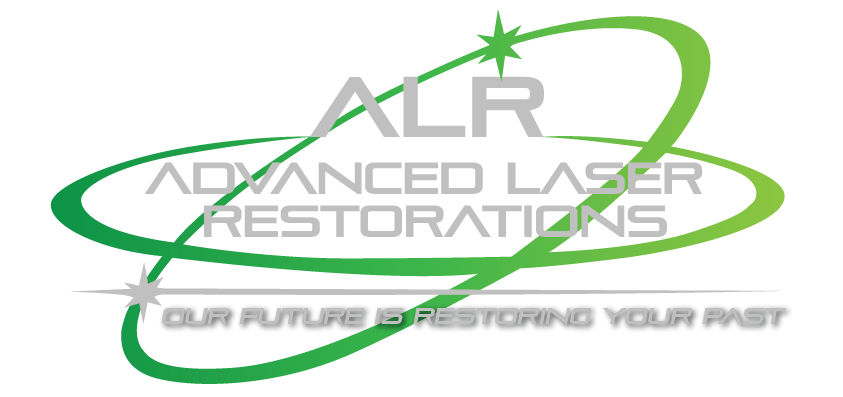
Our Services
Home >THE POWER OF LASER TECHNOLOGY
Eco-friendly, customisable, safe, and cost-efficient cleaning harnessing the power of laser technology.
We partner with you to understand your requirements and provide all your laser cleaning needs for the removal of rust, paint, or other deposits from many different types of surfaces. We are mobile laser cleaning services that comes to you – free of chemicals and toxic waste.
Need access solutions for your laser cleaning project? If you’re in New South Wales, we can also supply, erect, transport, and dismantle a range of scaffold equipment to facilitate any obstacle during the cleaning process, ensuring your project is completed quickly and smoothly.

Heritage Restoration & Conservation
Heritage restoration and conservation requires precision and a delicate touch to ensure no surfaces or structures are compromised or damaged. Cleaning with laser light is both gentle and effective as it uses a non-abrasive, non-contact method to remove harmful and unattractive deposits without chemicals, water, dust, or residues that can permanently damage historic and cultural treasures. There’s also no run-off, chemicals, or waste left behind to dispose of when finished. Any mess that is made can be cleaned up with a standard vacuum. This means that there will be no residual waste running off into waterways and no airborne particles dispersing into the air – making the whole process truly green and clean!
Example application areas:
- Natural stone facades and buildings
- Monuments, statues and sculptures
- Historic metal conservation
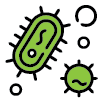
Biofilm Removal
A biofilm is a collection of one or more types of microorganisms that can grow on many different surfaces. Microorganisms that form biofilms include bacteria, fungi and algae. Biofilms cannot be removed with gentle rinsing, but can be vaporised with laser cleaning, preventing further deterioration of the surface it grew on.
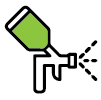
Coating & Overspray Removal
Traditional coating-removal techniques, such as sandblasting, can be time-consuming and harmful to the materials involved. Laser cleaning, however, is capable of safely removing the coatings without damage to the substrate. And as an added bonus, when the laser cleaning process is complete, there is no additional clean-up needed – the treated area is ready for next steps.
For coatings that are made from hazardous materials such as lead or asbestos, clean-up can be a difficult task. Given the dangerous nature of these coatings, other traditional methods of removal require a substantial amount of protection both for the operator and the environment, generally requires encapsulation, and costly waste removal. Laser cleaning, on the other hand, provides a safe and efficient way to remove the hazardous coatings from targeted areas in your facility by using fume extraction techniques that are proven to eliminate hazardous dust, clean-up of blasting grit and debris, and toxic waste disposal, with minimal PPE required.
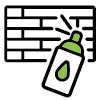
Graffiti Removal
Laser cleaning services are very suitable for removing graffiti. The laser beams will quickly heat up the paint layer, which then evaporate. The underlying surface remains cool because of its higher ablation temperature, restoring the underlying stone, brick, steel or plaster to it’s original state. And there’s no waste to clean-up afterwards – our laser cleaning machine extracts and filters the evaporated paint. Particles that don’t evaporate but that did come off, are also extracted.
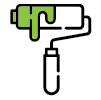
Paint Removal
Laser cleaning services is often used for partial or complete removal of paint layers, without damaging the substrate. The process can be applied to any metals, although the most typical applications are steel and aluminium. It can be used for most types of coatings, including powder coating, e-coating, and phosphate coating. Advanced Laser Restorations can instantly remove paint, without the need for chemicals or abrasive media, making it the easiest and most environmentally friendly paint removal approach. Unlike other paint removal methods (such as sand blasting, xxxxxx), laser cleaning requires minimal set-up time and will save you on costs associated with secondary waste disposal.
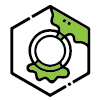
Corrosion, Rust & Oxide Removal
Corrosion, rust, and oxides can cause significant damage and hinder the lifespan and performance of parts and equipment. Laser rust removal is a cost-effective and greener alternative to manual and chemical cleaning methods since it fully removes corrosion to the bare metal without altering the integrity of the metal itself. With a quick set-up and pack-down time, and limited hazardous waste production during the cleaning process, laser rust removal is the perfect solution for restoration and maintenance.

Moulds Cleaning
Mould cleaning using laser technology is an economical alternative to traditional methods. Laser mould cleaning is an environmentally sustainable process that quickly and safely removes stubborn plastic or food residue without producing chemicals or abrasive waste and leaving the mould in its original state.
Example application areas:
- Baking moulds. Hot surfaces used in food product manufacturing, metallic baking trays, food moulds, and conveyors can be cleaned free of oil, grease, and deposits quickly and efficiently with our laser technology. Flat and textured baking moulds of steel, cast iron or chrome plated metal are well-suited for laser cleaning.
- Tyre moulds.
- Injection moulds
- Rubber moulds and tools
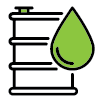
Grease & Oil Removal
Grease removal using traditional methods of cleaning is messy and time consuming. Advanced Laser Restorations can easily degrease any surface quickly using the power of light. Grease and oil have the advantage that they’re usually dark or completely black when they need to be removed. This is ideal for laser cleaning. A dark, contaminated layer absorbs the heat of the laser beam quickly and evaporates without damaging the surrounding material. We can remove grease and oil from a variety of different surfaces including engines, mechanical parts, equipment, and tools.
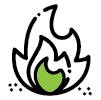
Removal of Soot Deposits
Laser is the perfect solution to restoring surfaces which have been subject to fire damage. The laser will leave the underlying surface intact, but it will remove the soot build up that occurs during a fire. Surfaces suitable for the removal of soot, even if the soot has been on there for a long time, include: brick, concrete, glass, steel, cast iron, aluminium, chrome coating, natural stone, tiles and ceramics, most sorts of wood, and plaster.
